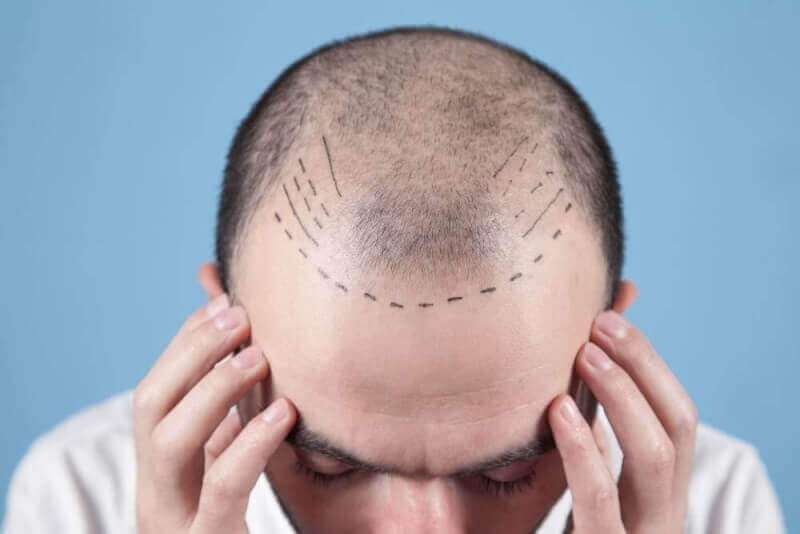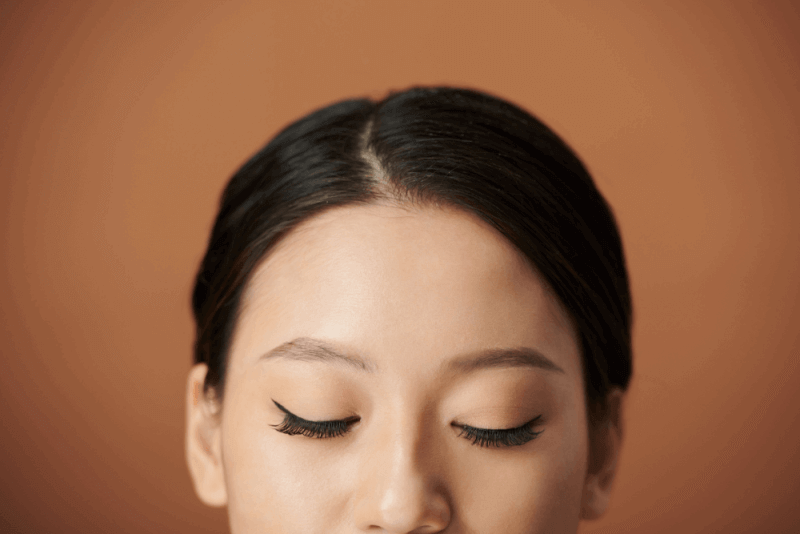What is hair transplantation?
Hair transplantation, one of the treatment options for hair loss, is applied with different methods. However, the common point of all methods is the transplantation of healthy hair follicles to the thinning areas. This procedure, which is performed under operating room conditions and in a sterile manner, is applied with local anesthesia. Each hair follicle is transplanted individually.
Hair analysis and examination
Before hair transplantation, the hair follicles and the area to be transplanted should be analyzed in detail. In this way, the most appropriate method for the patient can be easily determined. Another important part of the hair analysis is the planting of at least 50 hair follicles per square centimeter in the balding area. For this reason, various tests need to be performed.
It is also important whether the hair in the donor area is thin or thick, as well as whether it is curly, straight or wavy. People with wavy hair have fewer grafts to be used in hair transplantation. In addition, the hairline must also be determined correctly in hair transplantation. The hairline should be suitable for the facial structure of the patients. In this way, a more aesthetic appearance is achieved.
Finally, the general health status of the person who wants to have hair transplantation should also be evaluated. The presence of chronic diseases such as heart disease or diabetes is important for the application.
Who can undergo hair transplantation?
Hair transplantation is a method that can be applied after the age of 19-20 in both men and women. However, some conditions must be met for hair transplantation to be applied. These conditions include the following:
- Absence of any physiological disease that prevents hair transplantation
- Sufficient hair follicles in the donor area
- The person has completed his/her physical development
- Sufficient space in the area to be planted
Hair transplantation is a method that can be applied not only to the scalp but also to people with eyebrow, mustache and beard loss. In addition, hair transplantation is performed not only for areas that are experienced in a certain area and balding is seen completely, but also for thinning areas.
How long does a hair transplant take?
The duration of hair transplantation takes between 3 and 5 hours depending on the method applied and the size of the area to be transplanted. If the person who has hair transplantation does not want it to be known that this procedure has been performed, then there is a 15-day rest period. However, if there is no such concern, a 2-day rest period after the procedure will be sufficient.
How does the process progress in hair transplantation?
The donor to be used in hair transplantation is usually taken from the nape or temple of the head. However, in some cases, hair follicles in these areas do not have the characteristics that can be donors. In this case, donors are taken from the arms or chest wall. These donor follicles used in hair transplantation treatment are called grafts. A single session is usually sufficient for hair transplantation treatment. However, in some people, the treatment is completed in 2 or more sessions because the balding area is too large.
Hair transplantation treatment is a treatment method applied under operating room conditions. Because basically hair transplantation is a tissue transplant. In hair transplantation under local anesthesia, local anesthesia is applied to both the donor area and the area to be transplanted. The grafts taken from people are made ready for transplantation in different ways according to the technique to be applied. At this point, it is important to determine the most appropriate method for the patient. Otherwise success will be unlikely.
After this procedure, which is applied using microsurgery, the transplanted area is covered with a bandage. The bandage, which is applied both to protect the area from external factors and for faster fusion, is removed when the doctor deems appropriate.
In order for the treatment to be successful, the transplanted hair follicles must start to bleed and feed. In this way, the hair begins to grow and the balding skin regains its natural appearance. This also means that the treatment was successful.
Things to consider before hair transplantation
Although hair transplantation involves an easy surgical procedure, there are some points that people should pay attention to before transplantation. These include the following:
- Alcohol should not be consumed for one week before the procedure.
- The use of aspirin and blood thinners should be suspended for one week before the operation.
- Hair must be clean before hair transplantation.
- Nothing should be applied to the hair before the operation.
- The doctor should be informed about general health.
- Food can be eaten before hair transplantation, but drinks containing caffeine should not be consumed.
- When going to the hair transplantation procedure, clothes with zippers or buttons that can be easily removed should be preferred.
After hair transplant
In order for hair transplantation to be successful, patients should pay attention to some points after hair transplantation as well as before hair transplantation. It is possible to basically divide these points that need to be considered into three.
Another important point is that people should not enter the sea or pool for the first month after hair transplantation. In addition, people who have hair transplantation should also protect the transplanted area from sunlight.
Nutrition
Another point to be considered for successful hair transplantation treatment is nutrition. For this reason, it is recommended that patients reduce the amount of cereal derivatives in their diet for 15 days after the operation. In addition, animal foods and fermented foods should be avoided. It is also recommended to minimize the consumption of yogurt, pickles and foods containing probiotics. It is recommended not to consume animal fats during this period as they may cause acne formation.
Caffeine-containing drinks and tea should not be consumed for 3 days after hair transplantation. In addition, alcohol and tobacco products should be avoided for successful treatment.
Vitamins to be consumed after hair transplantation
After hair transplantation, it is necessary to get help from some vitamins to ensure faster fusion and healthy growth of new hair. The most important vitamin for hair health is B vitamins:
- Eggplant, offal, carrots, rice, lamb, lentils, fish, pasta, spinach, parsley and artichokes are rich in vitamin B1.
- Foods such as dark green leafy vegetables, milk and dairy products, peppers, mushrooms, eggs, avocados and pumpkin are rich in B2. Vitamin B2 increases the nutrition of hair follicles. In this way, hair grows faster.
- Vitamin B3, which is abundant in mutton, chicken breast, mushrooms, fish, sunflower seeds and peas, helps maintain hair color.
- Vitamin B5, which is abundant in red meat, legumes, cabbage, broccoli, eggs, milk and potatoes, prolongs the life of hair follicles.
- Vitamin B6, which is abundant in salmon, red meat, milk, bananas, carrots and cheese, helps the scalp to heal faster.
- Vitamin B7, which is abundant in bananas, whole grains, legumes, broccoli, cauliflower, nuts and green leafy vegetables, helps to heal skin damage quickly and helps hair to turn gray later.
- Vitamin B9, which is abundant in whole grains, beans, nuts, egg yolks, citrus fruits and rice, helps hair grow faster. It also helps hair to turn gray later.
- B12, which is abundant in seafood, kidneys, beef, liver and milk, helps hair grow and grow faster.
- Vitamin A, which is abundant in beef liver, dairy products, fish, dark green leafy vegetables, carrots, hibiscus and pumpkin, helps cells to heal quickly.
- Vitamin C, which is abundant in citrus fruits, arugula, red and green peppers, parsley and broccoli, increases blood circulation and provides more nutrition to the hair follicle. In addition, it also helps the hair to whiten later by preventing hair breakage.
- Vitamin D, which is abundant in fish, cheddar cheese, mushrooms, chicken meat, red meat and eggs, not only accelerates the healing process but also improves the quality of the transplanted hair.
- Vitamin E, which is abundant in olive oil, sunflower oil and hazelnut oil, helps the tissues to heal quickly and also helps the hair to grow faster.
Washing
Patients should not wash their hair for 3 days after hair transplantation to ensure fusion. After 3 days, the first wash is recommended to be done at the hair transplantation center. After the first wash, patients are recommended to wash their hair at most once a day.
If the first washing cannot be done in the transplantation center, then patients should be extremely sensitive in the hair washing process. Palms or fingertips should be used for washing. Avoiding harsh movements is extremely important to prevent damage to the newly transplanted hair follicles.
After washing, the hair can be dried with a towel. However, care should be taken to ensure that the towel to be used is clean. In addition, the towel should not be rubbed against the hair or scalp during drying. Instead, the water can be removed from the hair with gentle movements. It is one of the most important points not to use a hair dryer to dry the hair.
Crusting and itching
Since hair transplantation is a surgical procedure, open wounds are possible. For this reason, crusting and itching on the scalp for 7 to 10 days after hair transplantation is an expected situation. On the other hand, if crusting and itching lasts more than 15 days, the doctor who performed the procedure should be contacted as soon as possible.
Recovery process after hair transplantation
The recovery process after hair transplantation will vary according to the method applied and supportive treatments. However, the healing process generally continues as follows:
- On the first day after hair transplantation, a dressing is applied to the patients and then the bandage is removed.
- The hair is washed on the third day after hair transplantation. It is recommended to wash the hair every day afterwards for the scab to heal quickly.
- 10 to 15 days after hair transplantation. recovery starts between days.
- In the third week after transplantation, the first hairs begin to fall out,
- 3 months after the hair transplant operation, permanent and healthy hair begins to grow.
- In the sixth month after the operation, new hair begins to cover the area completely.
- In the first year of hair transplantation, new hair growth completely covers the area and all scars disappear.
Types of hair transplantation
Although hair transplantation methods are developing day by day, they are basically done in 2 different ways. The factor that divides hair transplantation methods into two main headings is the way donor hair follicles are taken. In the first technique, a hair follicle is taken between the two ears. However, care is taken to ensure that there is no scar in the form of a straight line in this procedure. In the other method, donor hair follicles are taken from the back of the head. What is important in determining the most appropriate method is the rate of hair loss and the health of the hair follicle in the donor area.
FUT hair transplant
The fut technique is a technique that was practiced intensively until the early 2000s but was gradually abandoned due to the techniques that developed afterwards. In this technique, the hair follicles behind the ears and on the nape of the neck are removed together with the skin.
In the donor area, the donor hair follicle is removed together with the skin in an area of 3 square centimeters. Afterwards, the hair follicles in the removed skin are extracted with a special method and applied to the area to be transplanted. The incision site is closed with sutures.
Although the healing process is later than other hair transplantation methods, the operation time is shorter than other methods due to the fact that hair transplantation is performed collectively. Another factor for the abandonment of this technique is the scarring in the incision area.
FUE hair transplant
In the FUE technique, which is the most preferred hair transplantation technique especially in the last 15 years, donor hair follicles are taken from the nape of the neck of the patients. Since the grafts are collected one by one, no incision is applied. The collected grafts are then processed in different devices. In the meantime, the area where the hair transplantation will be performed is prepared and then the grafts are applied one by one.
In the FUE hair transplantation technique, the procedure time is prolonged as the hair follicles are applied one by one. On the other hand, the healing process is shorter than the FUT technique and there is no possibility of scarring. For this reason, it is the most preferred hair transplantation technique today.
Manual punch hair transplant
In manual punch hair transplantation technique, which is one of the FUE techniques, the difference is that the hair follicles collected from the donor area are collected with a punch device. Punch, which is not an electric tool, makes small holes around the hair follicles and allows the hair follicle to be removed.
This method, which was used in the early days of the FUE technique, has been replaced by the micromotor hair transplantation technique with technological developments in this field.
Micromotor hair transplantation technique
In the micromotor hair transplantation technique, which is one of the FUE methods, the device used to collect donor follicles has an advanced technology. The collection of donor roots is faster with the micromotor, an electronic device. It also ensures that hair follicles are more likely to remain alive. For this reason, the success rate is higher than the Punch technique.
DHI hair transplant
DHI technique, which is one of the newest methods among hair transplantation techniques, stands for Direct Hair Transplant. It is used in combination with the FUE technique. For this reason, the FUE technique is used to collect donor hair follicles. However, this method has an important difference from the FUE technique. The DHI technique uses a special pen. Thanks to this pen, root canalization and hair transplantation are performed at the same time. Therefore, the success rate is higher.
Another reason why DHI hair transplantation technique is preferred is that the procedure ends in a short time and allows for frequent transplants. However, frequent hair transplantation is not possible for people with intense hair loss. The reason for this is the lack of donor hair follicles.
Robotic hair transplantation
In the robotic hair transplantation technique, which is one of the newest methods among hair transplantation methods, computers are used both in the collection and transplantation of donor hair follicles. In addition to computerization, the FUE technique is applied. However, the biggest difference from the FUE technique is that the procedure is performed with precise robotic arms.
Hyperbaric hair transplant
It is a method that allows the healing process to be faster after hair transplantation. During this process, oxygen is utilized because of its high healing power. For this reason, it is a method applied after the completion of hair transplantation.
PRP treatment
Another complementary treatment that makes hair transplantation treatment more successful is the PRP method. In the PRP method, the person's own blood is taken and subjected to a special process. The liquid obtained after this process, which is rich in platelets, is injected into the hair follicles.
Since only the person's own blood is used in the PRP method, there is no possibility of allergy. Platelets provide faster recovery.
Mesotherapy
Mesotherapy is the injection of minerals, vitamins and amino acids that hair follicles need into the hair follicles. It is one of the techniques that help hair follicles to hold and grow in a healthy way. It ensures that hair transplantation is successful with mesotherapy, whose sessions last an average of 15 minutes.
Regenera Activa treatment
Regenera activa treatment is also a different method of hair transplantation treatment. Hair transplantation is not performed in this method. However, people's healthy hair follicles are still removed. In healthy hair in the nape area, 3 to 4 roots are taken and then a solution is prepared with special suspensions. This solution is then applied to the areas with hair loss problem.
Hair growth process in hair transplantation
3rd day after hair transplantation week is the most important week to understand whether the treatment was successful or not. Because after this week, the transplanted hair begins to fall out. There should be no panic at this stage. Because this is one of the indicators of successful treatment.
After hair loss, it can be seen that it is not replaced immediately. Because healthy and strong hair starts to grow only after 4. corresponds to a month. For this reason, patients should wait up to 4 months after treatment to regain healthy hair.







